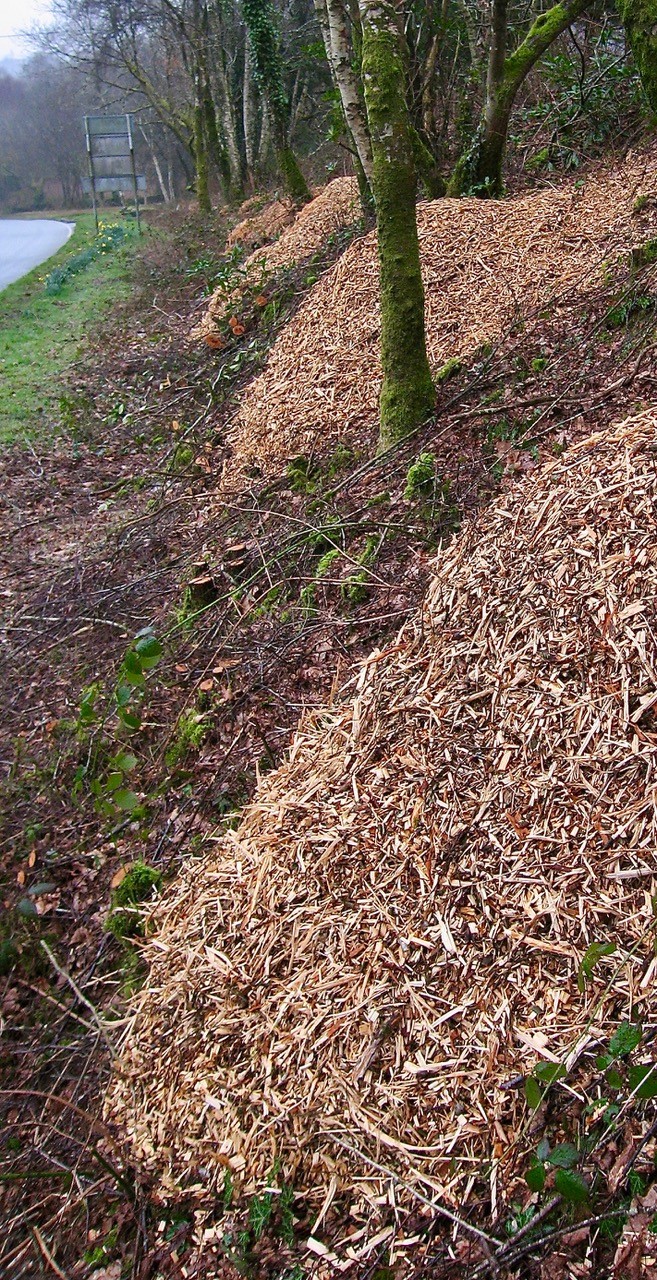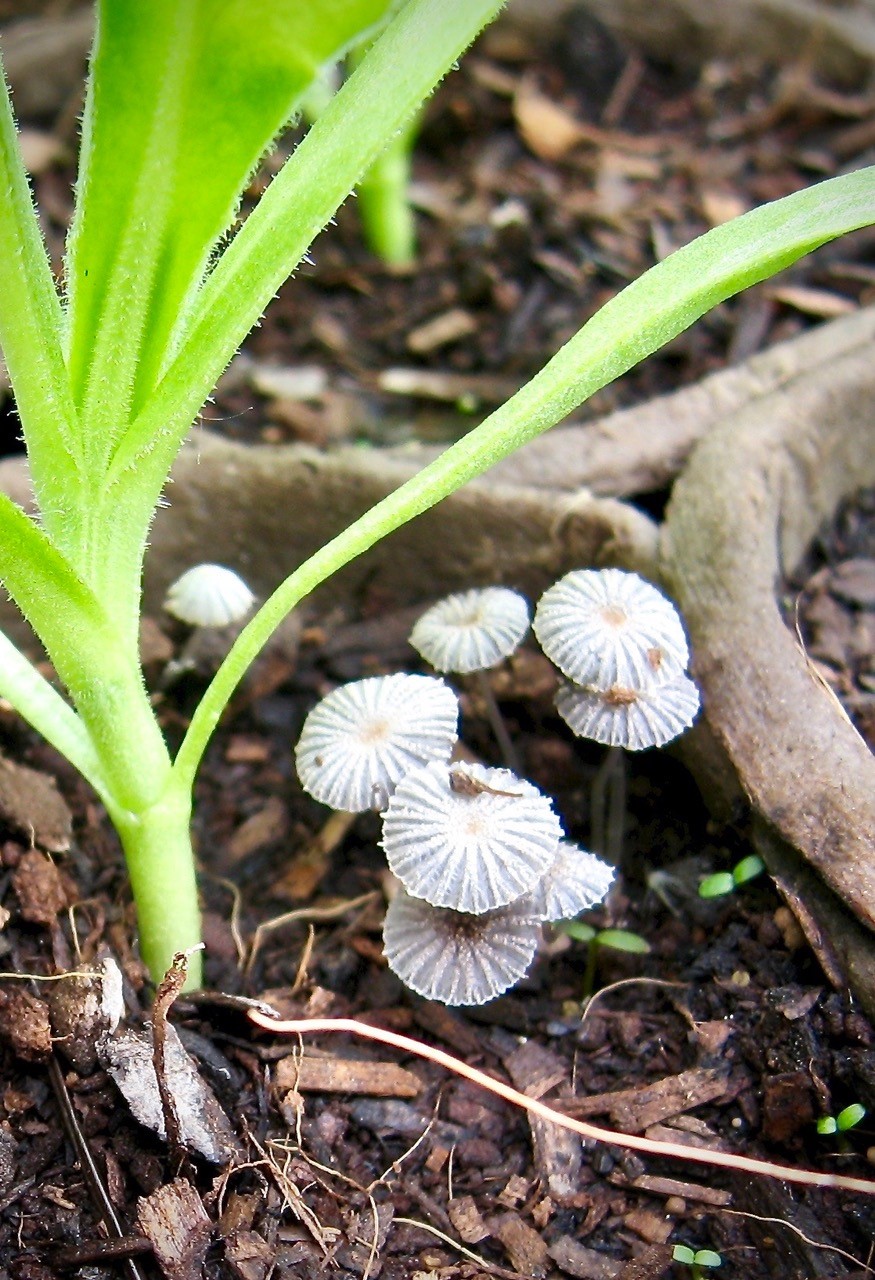As ecological crises deepen, we need to start gardening differently. On compost – peat-free, of course – the answer could be to think closer to home – and outside the bag.
We often hear the term ‘blue-sky thinking’, which is consultant-speak for creative thinking that’s beyond the norm, outside the box – thinking that’s not constrained by current ideas, practices or beliefs. Put simply, it’s a way of clearing the decks and of generating fresh, new, joined-up thoughts and concepts, then applying them – where practicable – to familiar situations, or to vexing conundrums.

In our case, ‘green-sky gardening’ is one way to open our horticultural minds to what’s happening beyond the garden fence, and to see past staid, stale gardening advice and attitudes, which are increasingly unfit for a natural world replete with intertwined ecological crises: climate breakdown, insect decline, air and plastic pollution… all are now classed as human-driven global emergencies. Okay, so I’ve changed the colour to green, and ‘gardening’ is a fitting usurper of ‘thinking’. It hardly matters what we call it – we just need big barrowloads of it, and we need to turn it into action. Pronto.
There’s an inescapable irony in thinking you’ve stumbled on a modest, partial solution to our unfolding climate emergency, while you’re driving a car. But that was the moment when my musing sky flipped from blue to green. It wasn’t that I’d driven past an ‘opening soon!’ sign for a new, local plant nursery raising low-mileage, peat-free plants (if only), or a start-up, co-operative community garden centre with ethical roots (sigh). Nor was it the swathes of winter heliotrope, lifting their sweet, defiant blooms up through a carpet of grimy just-strimmed plastic litter, that had me whooping with green-sky optimism. It was the bright heaps of chipped woody brash, dumped below the recently butchered trees and bushes along a nearby stretch of main road, that got my earth-friendly gardening sap pumping. And it’s still only February.
We know that the old mantra ‘use a sterile compost’ is flawed advice from a bygone era of if-it-moves-kill-it gardening. It’s been used often enough by pro-peat gardening pundits – who religiously prop up the Big Peat industry – to sully nature-friendly, renewable peat-free composts at every turn (we know that mining non-renewable peat wrecks peatland habitat, releasing stored fossil carbon that’s driving our climate emergency, which itself is hastening insect decline…). But as savvy gardeners know, and as more professional gardeners and growers now show, quality, proven peat-free composts grow exceedingly fine plants, with minimal environmental impact. What we also know is that there’s just as much ‘life’ inside the pots and around the roots of the plants growing in them, as there is in the plants themselves.

In sowing and potting compost lingo, ‘sterile’ means biologically dead. The first time that mini toadstools sprouted among the roots of my greenhouse tomatoes, potted in a peat-free compost with wood fibre in its mix, it gave me a start. But guess what? That alive, anything-but-sterile compost gave me one of the best crops of toms I’ve ever had. Since then, I see toadstools flourishing among the roots of plants – indoors and out – as nature’s hallmark of good things to come.
Guess what those fungi, as well as the meeker, unseen ones in the compost, were feasting on: bits of wood. Fungi gently break wood down, releasing extra nutrients to any plant roots their mycelium tangle with. Bits of wood just like… those mounded up along roadsides across the land. In a few weeks’ time, fungi will find them, spread through the heaps, and the feasting will begin. Sink your fingers in, and you’ll feel the heat of beautiful decay in action (they’ll steam on cold mornings). Some time after, you’ll see a flush of toadstools – big jobs this time – as spores are set forth on the breeze.
Fresh or worked over by fungi, these piles of wood chips are manna for gardeners. They’re free and renewable, and at the very least, you can deploy them as weed-smothering mulch (be safe and sensible when bagging them, and wear gloves). I’m a mad-keen mulcher, but I’ve gone even further. I use aged, fungi-worked chips in my home-made peat-free mixes, and I’m building my garden’s no-dig soil by using fresh and sappy chips (the thinner shoots and branches that are pulverised, then spat out, on our roadsides), which I work into the surface. These days, I’m growing willows and hazels just to shred for composting, and to feed my soil. Research into using wood chips to enrich soil, and to make peat-free compost on a market garden and farm scale is, er, mushrooming.
Our top peat-free compost-makers use wood chips/fibre, composted bark, bracken and wool, coir, and various other ingredients in their products. Not all peat-frees harness the power of wood chips, but many do, blending mixes gleaned from decades of research; the knowledge, the techniques and the recipes required to expertly transform bits of wood into first-rate, ecologically sustainable composts already exist. But they’re only made in a few locations, meaning that a bag of quality peat-free that we buy from a garden retailer may have clocked up a hefty number of lorry miles, dousing heliotropes (and us) in polluting, harmful diesel fumes. Could thinking outside the plastic bag (another conundrum), and some green-sky gardening, help us out?

What if we could make quality, reliably consistent peat-free compost next door to where most of us actually garden, or tend allotments? What if we could slash ‘compost miles’ by making it locally, using the expertise that already exists, through a licensing scheme? What if we could link up local compost-makers with ethically driven – not-for-profit, perhaps – gardening knowledge hubs (where you could ‘loose fill’ your own plastic-free bags or containers)? What if, instead of being left to feed fungi, those mounds of wood chips on our roadsides were harvested – it only needs the shredder’s chute to be pointed into a wagon – processed, composted, graded and blended with other ingredients into quality mixes, made just down the road? What if we got into some really deep green-sky gardening, and set up community leaf-mould schemes… ?
The best bit is that we gardeners would be a solid, reliable bet when it came to establishing new job-creating, compost-making businesses (other outfits could sprout up alongside, growing woody crops, for instance – think fast-growing willow – to make into compost). As purveyors of the ‘green pound’, we’d happily buy bags of the stuff every year, year after year, ad infinitum. Even the minority of us who mix our own compost can never make quite enough. As long as gardeners (especially those with greenhouses) tend the earth, our hunger for quality, reliable sowing and potting mixes will never wane. Unlike celebrity experts, compost doesn’t ever go out of fashion. Local authorities could buy some too, for their civic displays; it’d save them a few bob, coming from just up the road…
Red lights are flashing all around us. Emergencies abound. We hear a lot about how the act of gardening can ‘improve our environment’ and ‘make life better’. Here’s to that. But it’s time for gardening, and for the businesses and organisations that profit from it, to step up, get the blinkers off, and start doing, not just talking. A remedy for the most ecologically destructive aspect of gardening – the continued use of peat – lies in heaps along our roadsides.
It’s time to get those thinking caps on, and look to the sky. It’s a lovely shade of green.
Text and images © John Walker
Find John on Twitter @earthFgardener










